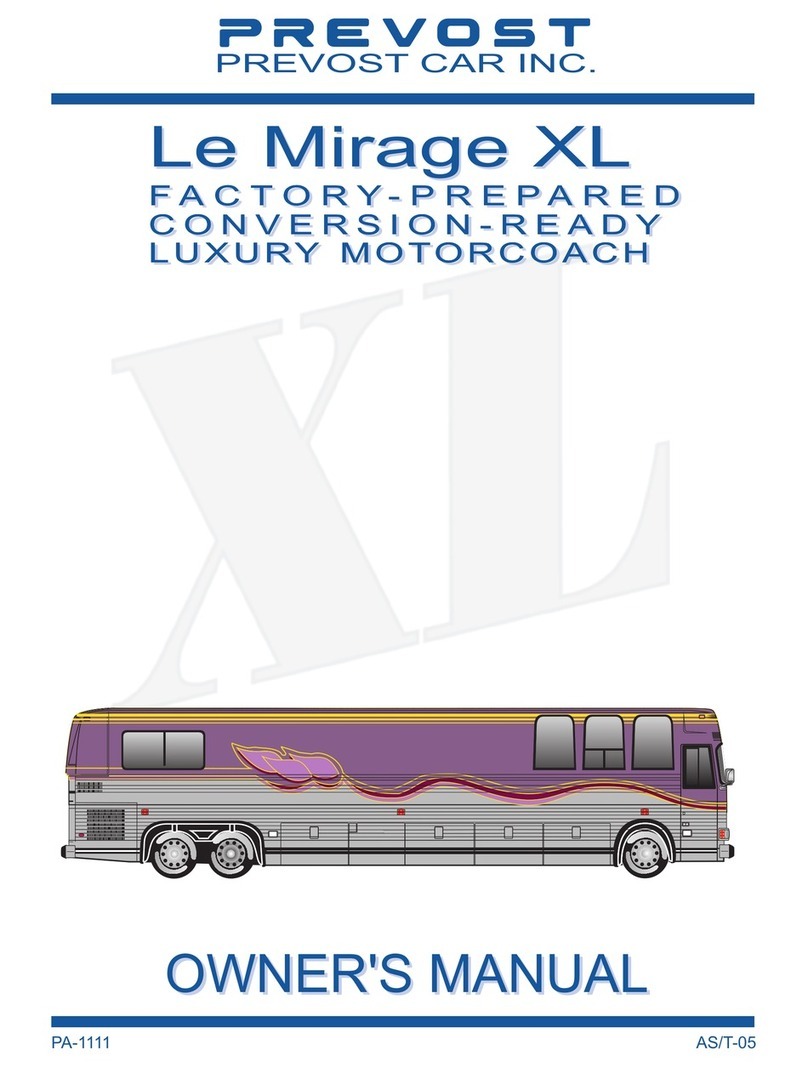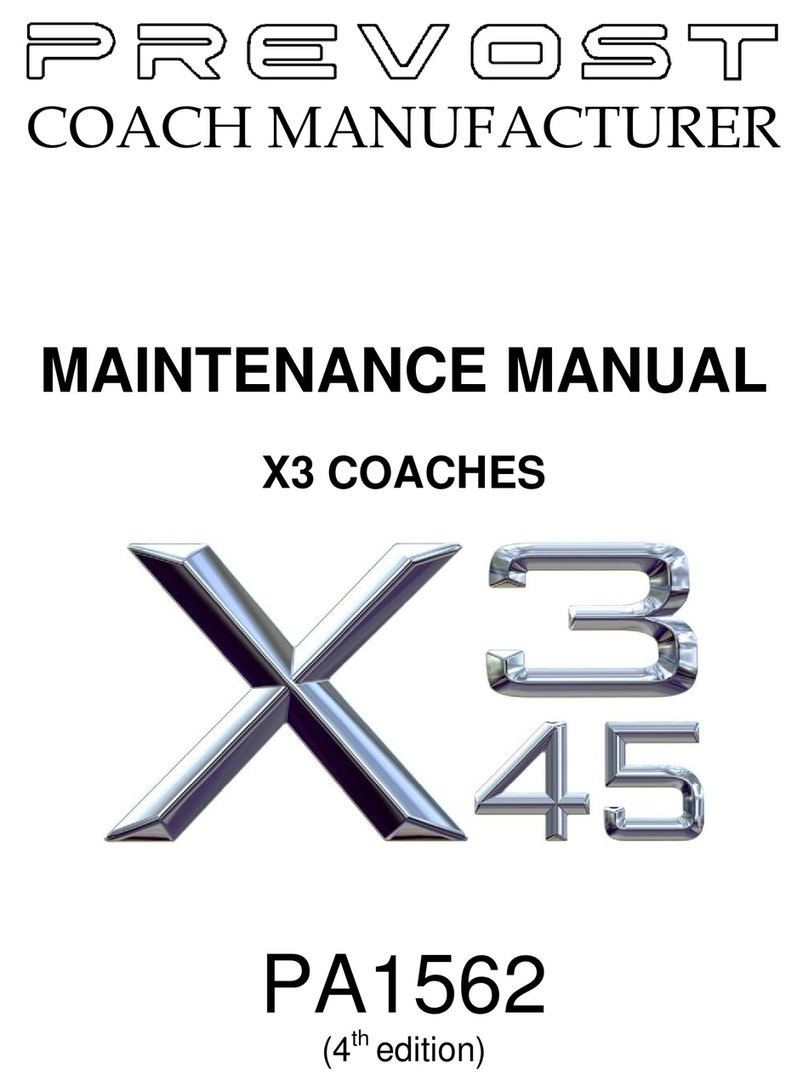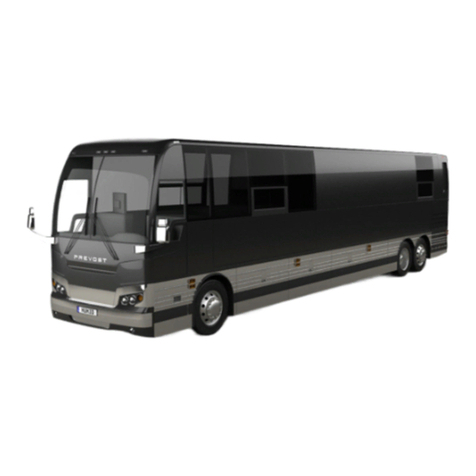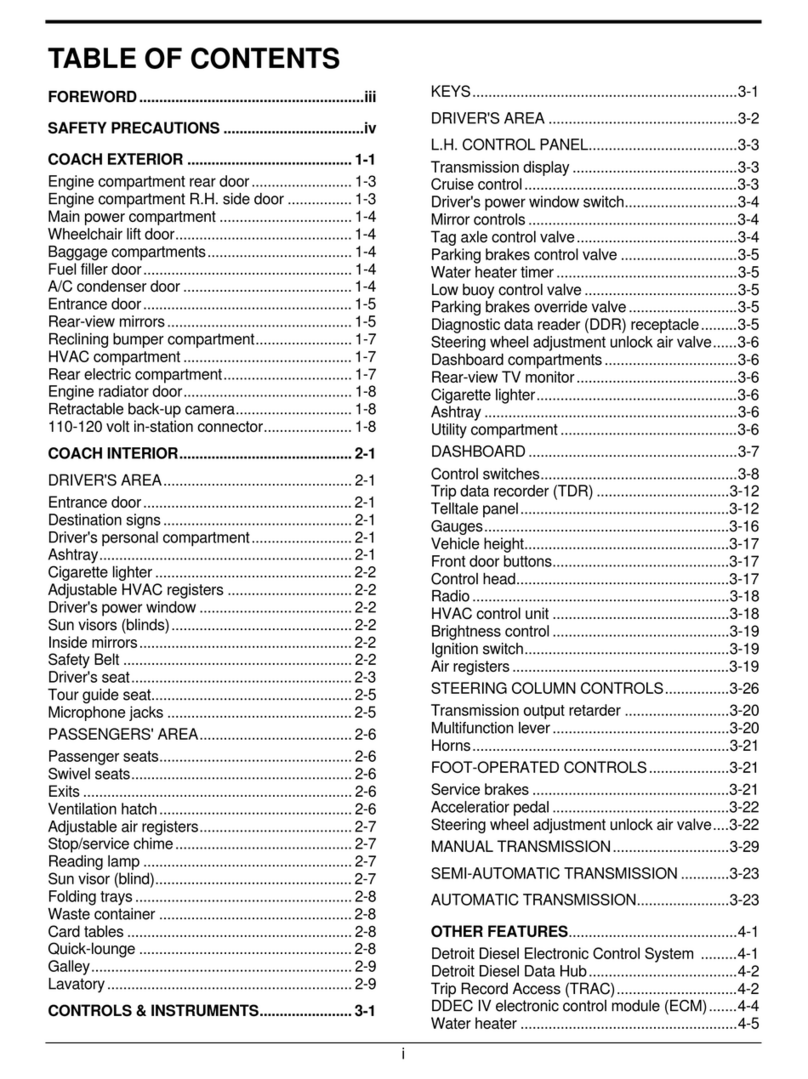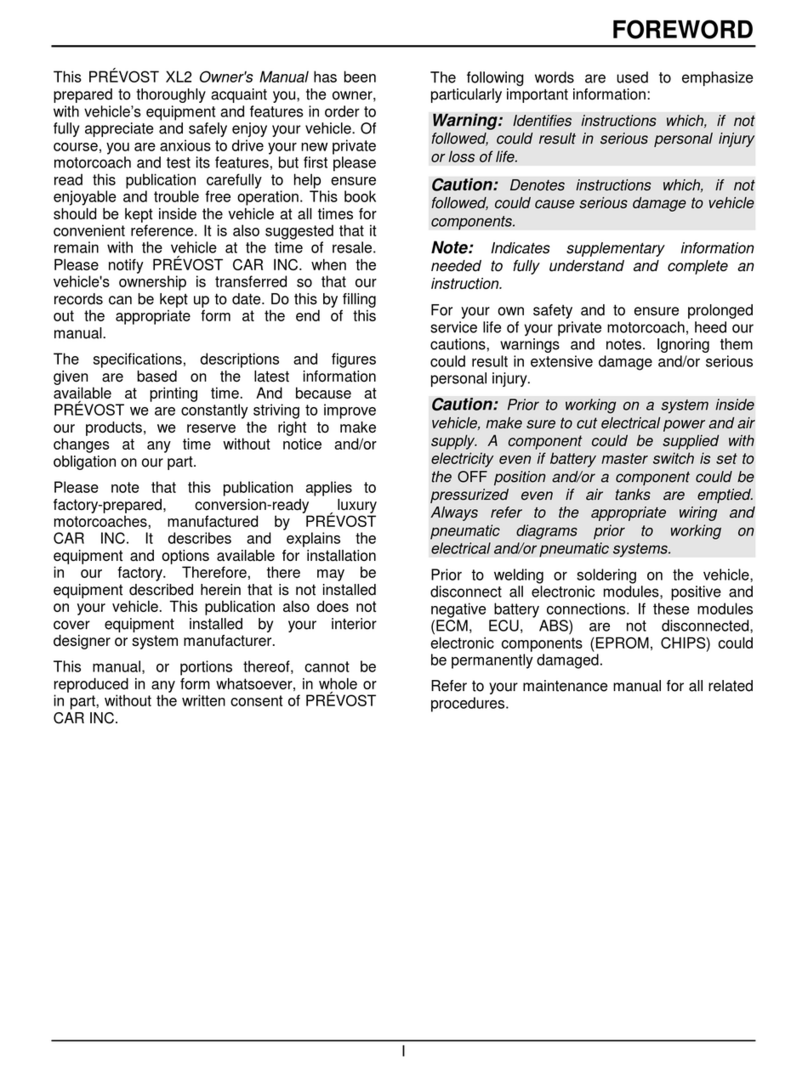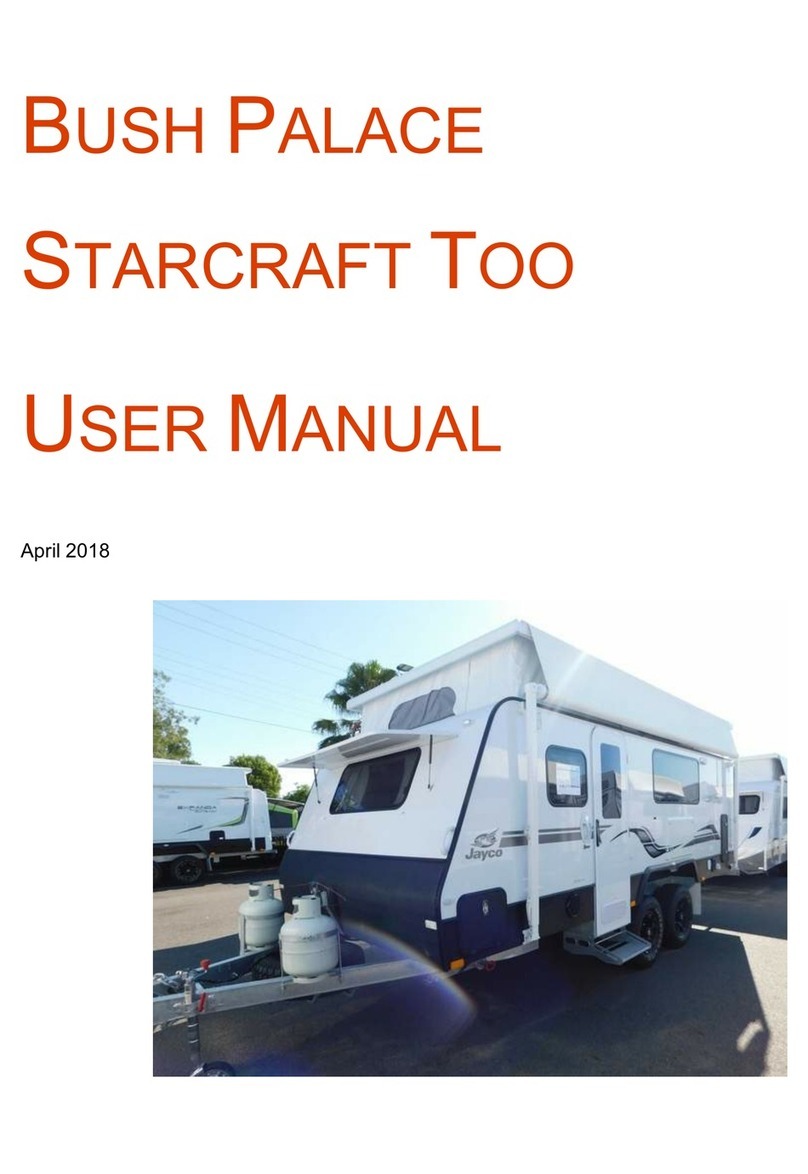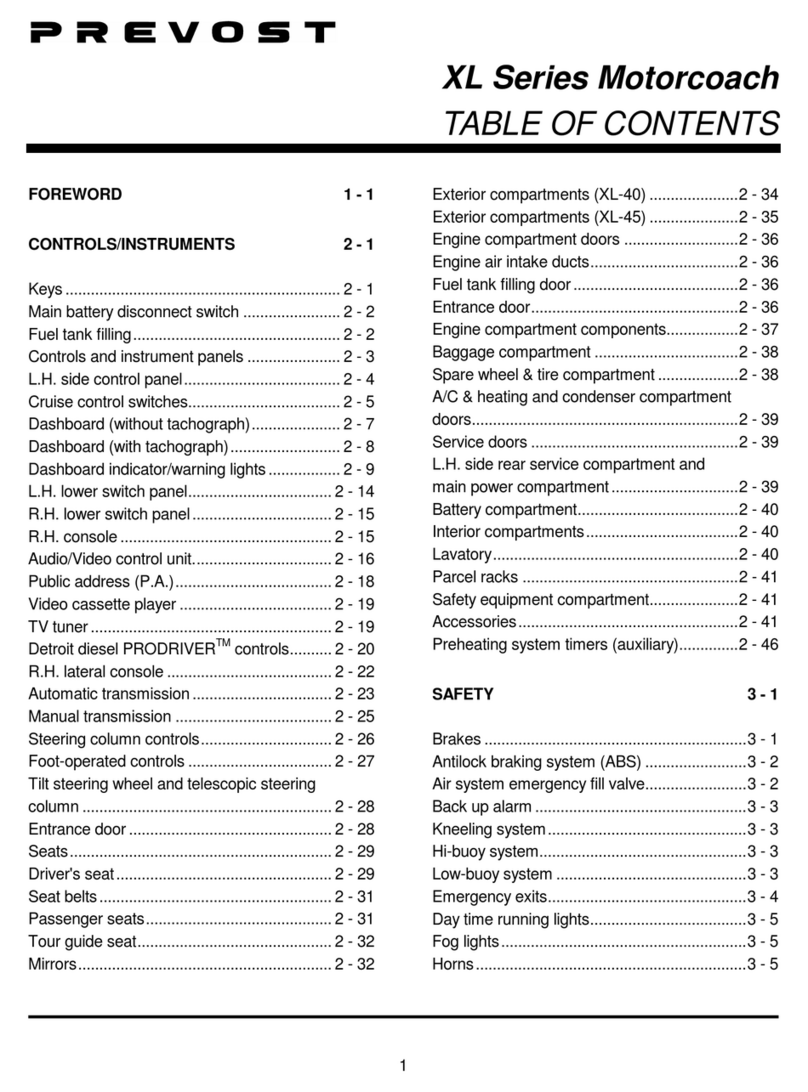
Section 00 : GENERAL INFORMATION
00-2
1. FOREWORD
This manual includes procedures for diagnosis,
service, maintenance and repair for components
of the H3 series coaches or VIP model listed on
the front cover page.
This manual should be kept in a handy place for
ready reference by the technician. If properly
used, it will meet the needs of the technician and
owner.
Information provided in Section 1 through 24
pertains to standard equipment items, systems
and components as well as the most commonly
used optional equipment and special equipment
offered on the coach models covered by this
manual.
At the beginning of each section; a Table of
Contents and a list of illustrations give the page
number on which each subject begins and where
each figure is located.
Coach operating information is provided in a
separate Operator's Manual. Audio/Video
system operator instructions are also included in
a separate manual.
More specific information on engine and
transmission operating, maintenance, and
overhaul information is contained in the
applicable engine or transmission service
manual published by the engine or transmission
manufacturer. Engine and transmission parts
information is contained in the applicable engine
or transmission parts catalog published by the
engine or transmission manufacturer.
All information, illustrations and specifications
contained in this manual are based on the latest
product information available at the time of
publication approval. The right is reserved to
make product changes at any time without
notice.
Note: Typical illustrations may be used;
therefore minor illustration difference may exist
when compared to actual parts or other
publications.
Prévost Car occasionally sends Maintenance
Information, Warranty Bulletins, Safety Recalls
or other literature to update users with the latest
service procedures. They are issued, when
required, to supplement or supersede
information in this manual. Update sheet should
be filled out and bulletins should be filed at the
end of their respective section for future
reference.
2. SCHEMATICS
Vehicle AIR SCHEMATICS are provided at the
end of Section 12, "Brake". SUSPENSION AIR
SCHEMATICS are provided at the end of
Section 16, "Suspension". Moreover,
ELECTRICAL SCHEMATICS are provided in the
technical publications box. Refer to those
schematics for detailed circuit information or
during diagnosis.
3. PRECAUTIONS TO BE OBSERVED
BEFORE WELDING
Caution: Cut off battery power in main power
compartment using battery safety switch.
1. Disconnect “Ground” cables from battery
terminals.
Note: Disconnect “Ground” cables only.
2. If welding must be done near the dashboard
i.e. steering column, you must disconnect all
electronic control modules (radio & control
head, HVAC, TTLT cluster Volvo). You must
also disconnect alternator module located in
rear electrical compartment.
3. Disconnect three wiring harness connectors
from ECM (Electronic Control Module). The
ECM is mounted on the starter side of the
engine.
4. For vehicles equipped with an Allison
automatic transmission, disconnect three
wiring harness connectors from ECU
(Electronic Control Unit). The ECU is located
in main power compartment.
5. For vehicles equipped with a WCL system,
disconnect electronic controller connector.
6. For vehicles equipped with ABS (Anti-Lock
Brake System), disconnect wiring harness
connectors from ABS Electronic Control Unit.
The ABS Electronic Control Unit is located in
the 1st baggage compartment.
7. Cover electronic control components and
wiring to protect from hot sparks, etc.
8. Do not connect welding cables to electronic
control components.
9. Do the appropriate welding on vehicle.
Caution: Position welding machine ground
clamp as close as possible to the work.
10.When welding is complete, reconnect ECM,
ECU, ABS electronic control units, etc.
11.Terminate by reconnecting “Ground” cables
to battery terminals.



